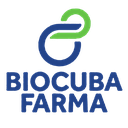Executive Secretary

VIII Simposio Internacional de Química y Ciencias Farmacéuticas
SIIQ
XIII Conferencia "La Ingeniería Química: Desarrollo, potencialidades y sus retos"
Resumen
Para muchos países en desarrollo la mayoría de los diluentes empleados en la industria son importados y altamente costosos, la industria textil es uno de los principales consumidores de estos productos, por lo que lograr diluentes que desde el punto de vista técnico y económico satisfagan sus intereses fue el objetivo principal de la investigación. El estudio se efectúo en una empresa que se dedica a la técnica de flexo grafía empleando esta materia prima en la dilución de pinturas. Para el desarrollo de esta se emplearon como principales herramientas el diseño experimental de mezclas a partir del método Simplex Látice que generó la matriz experimental de seis mezclas con sus réplicas teniendo en cuenta como variables de respuesta, el color, el tiempo y el costo. Del que se concluyó que el color y el tiempo no son significativos y el costo sí con un R2 de 100%. Por el método de superficie de respuesta se determinaron las regiones donde se minimizan los costos y por regresión múltiple se obtuvo el modelo que permite predecir el comportamiento del costo teniendo en cuenta la variabilidad de la composición de la mezcla, lo que constituye una herramienta útil en la toma de decisiones ante la inestabilidad o acceso a los diluentes estudiados en el sector empresarial.
Abstract
For many developing countries, most of the thinners used in the industry are imported and highly expensive, the textile industry is one of the main consumers of these products, so achieving thinners that from the technical and economic point of view meet their interests was the main objective of the research. The study carried out in a company that is dedicated to the flexography technique using this raw material in the dilution of paints. For the development of this, the experimental design of mixtures from the Simplex Látice method used as the main tools, which generated the experimental matrix of six mixtures with their replicas, taking into account color, time and cost as response variables. From which it concluded that the color and time are not significant and the cost is with an R2 of 100%. By of the response surface method, the regions where costs minimized were determined. By multiple regression, the model that allows predicting the behavior of the cost obtained, taking into account the variability of the composition of the mixture, which constitutes a useful tool in decision making in the face of instability or access to the diluents studied in the business sector.
Sobre el ponente

Dr. Nancy López Bello

Discussion




